2015: New Views of Solar System Planets And Objects
December 16, 2015
Dust Disk
The Student Dust Counter on NASA’s New Horizons Pluto probe produced this map of the Solar System’s dust disk, a region of debris beyond Jupiter which scientists believe was shed by Kuiper Belt objects. The instrument, operated by graduate students at the University of Colorado-Boulder, registered microscopic dust hits as New Horizons followed the white path into the outer Solar System.

Pluto Up Close
Pluto’s surface, with features measuring 250-280 ft. across, are presented in this color mosaic of data collected by two cameras on New Horizons as the nuclear-powered spacecraft flew within 10,000 mi. of the dwarf planet. The 50-mi.-wide strip encompasses the mountains dubbed al-Idrisi and the icy Sputnik Planum that appears as a heart-shaped feature from a greater distance. New Horizons continues to send home data collected and recorded before, during and after its July 14 trip through the Pluto system.
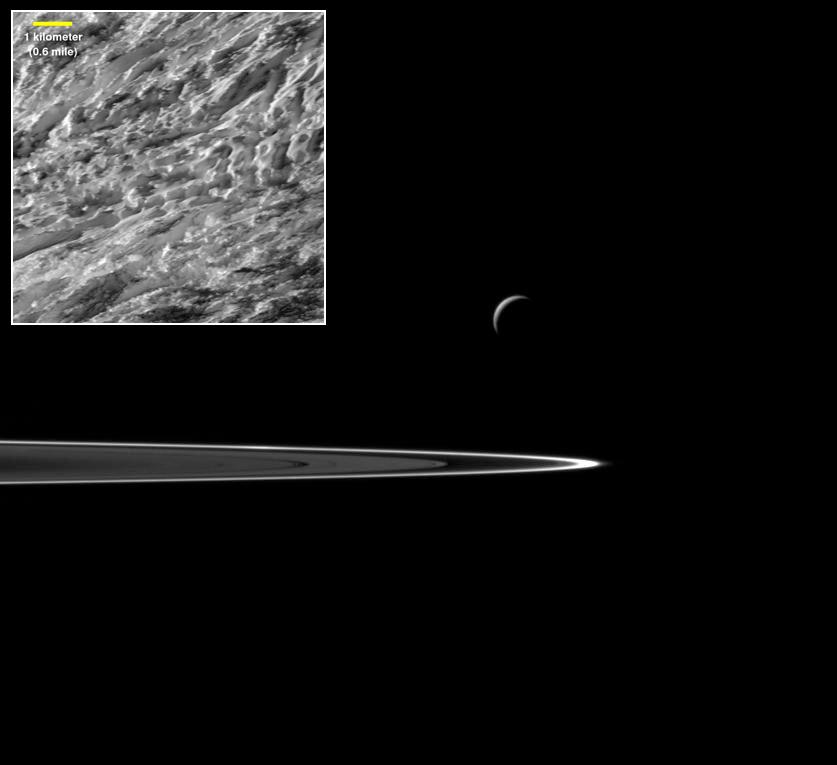
Last Visit to Enceladus
Saturn’s icy moon Enceladus recedes above the planet’s famous rings two days after the Cassini spacecraft that collected the image flew past at a range of only 30 mi., dipping through the plumes of water ice erupting from a series of fissures at its south pole. The close approach produced this image of terrain at 57 deg. S. Lat. (inset), processed to remove smearing caused by the probe’s rapid pass. Based on data Cassini generated on this and earlier flybys, scientists believe the small moon’s frozen surface covers a liquid-water ocean that could be a study target for future life-seeking missions.
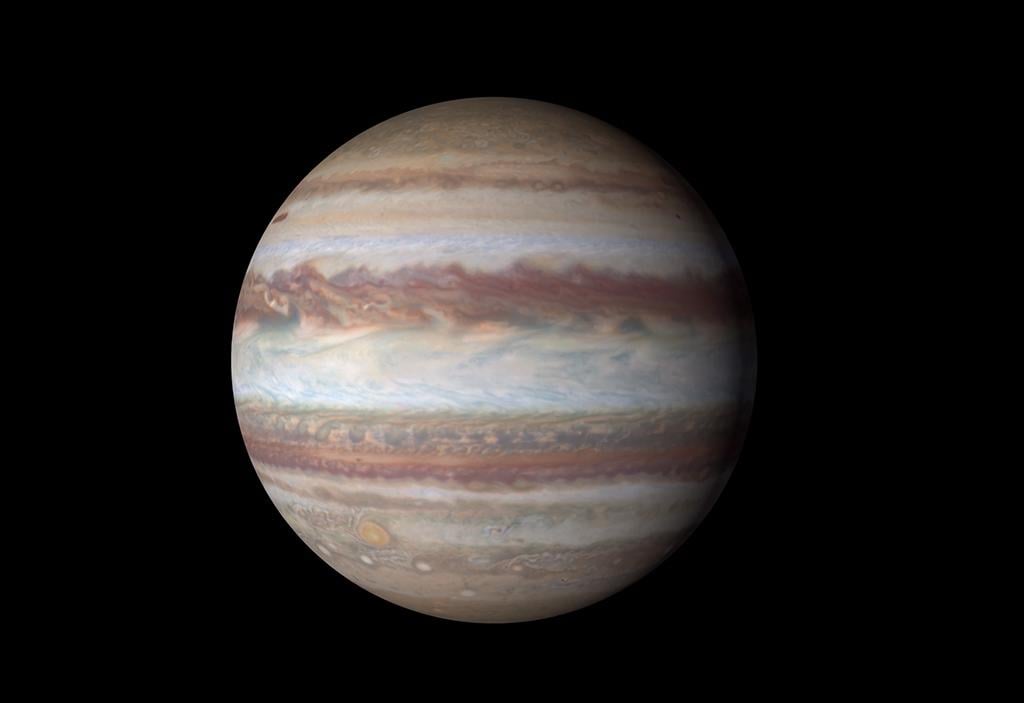
Jupiter: Coming Up On July 4
The Hubble Space Telescope collected the data for this full-planet Jupiter mosaic as part of an effort to track changes in the atmosphere from afar. By imaging the gas giant through multiple rotations, scientists are able to plot changes in the cloud tops to learn more about the weather forces at work below. On July 4, 2016, NASA’s solar-powered Juno orbiter will reach Jupiter and begin studying the atmosphere, temperature, magnetic and gravity fields up close.
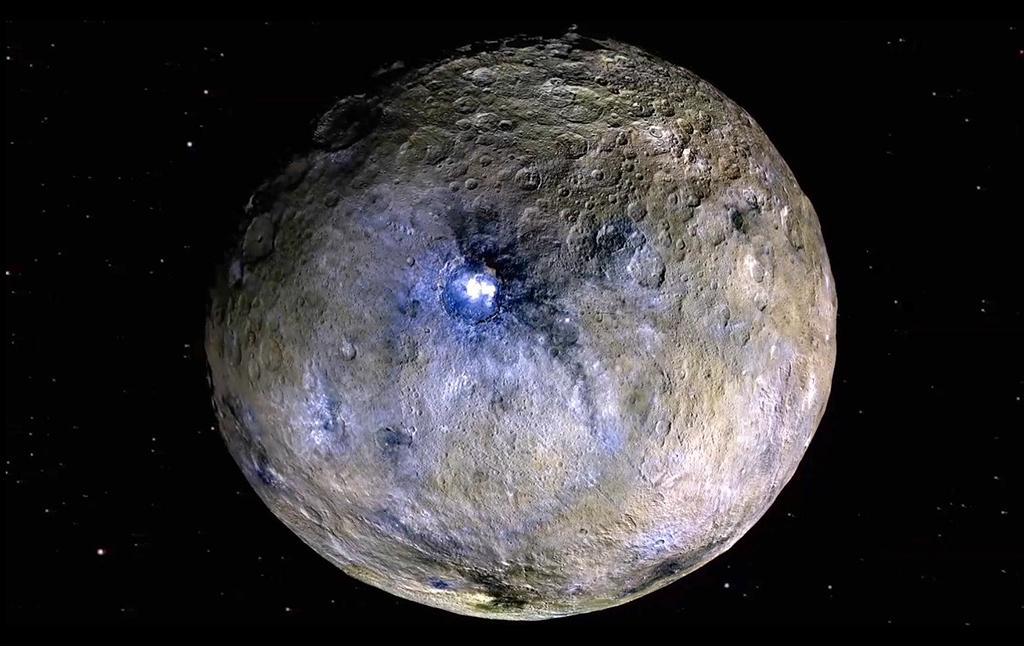
Ceres: Outer Solar System Visitor?
The Dawn spacecraft, using its solar electric propulsion to achieve orbit around Ceres —its second main-belt asteroid—has returned evidence that the 584-mi.-dia. dwarf planet may have formed in whole or in part near the orbit of Neptune. Dawn’s spectrometers found clays rich in ammonia, which needs colder temperatures to exist on its own as ice. This image shows the bright patch at the bottom of the crater dubbed Occator, a relatively fresh 60-mi.-dia. impact feature. Scientists believe the distinctive bright material—one of more than 130 such sites on Ceres—may be hexahydrate, a type of magnesium sulfate that may have been left behind when water ice sublimated.
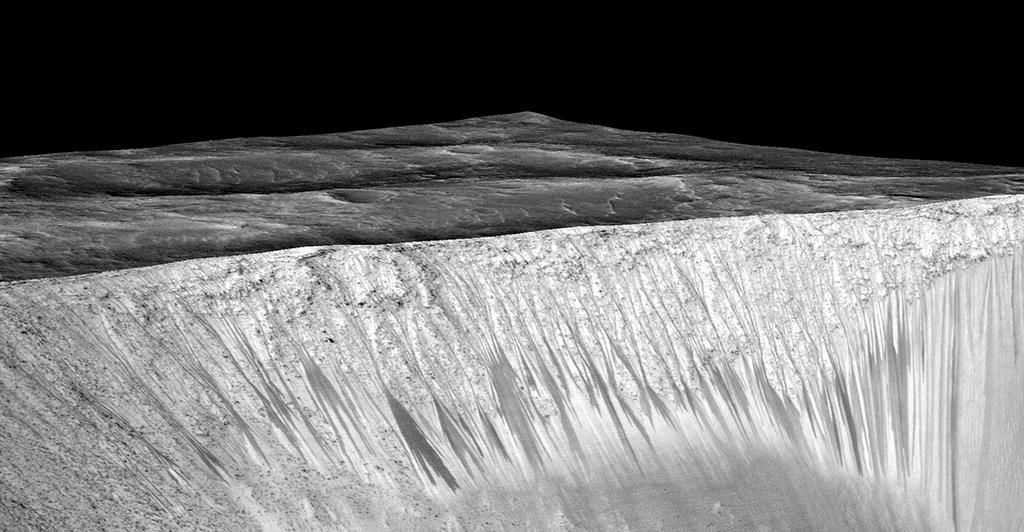
Running Water
This imagery based on data from the Mars Reconnaissance Orbiter shows Garni Crater, one of the sites on the red planet where scientists have long suspected that changing gullies called “recurring slope lineae” were left by water flowing down the steep slopes. Hydrated minerals detected with a Mars Reconnaissance Orbiter imaging spectrometer lead researchers to believe the gullies are formed when salty brine is warmed above its freezing point—lower than that of pure water ice—and released from subsurface reservoirs.
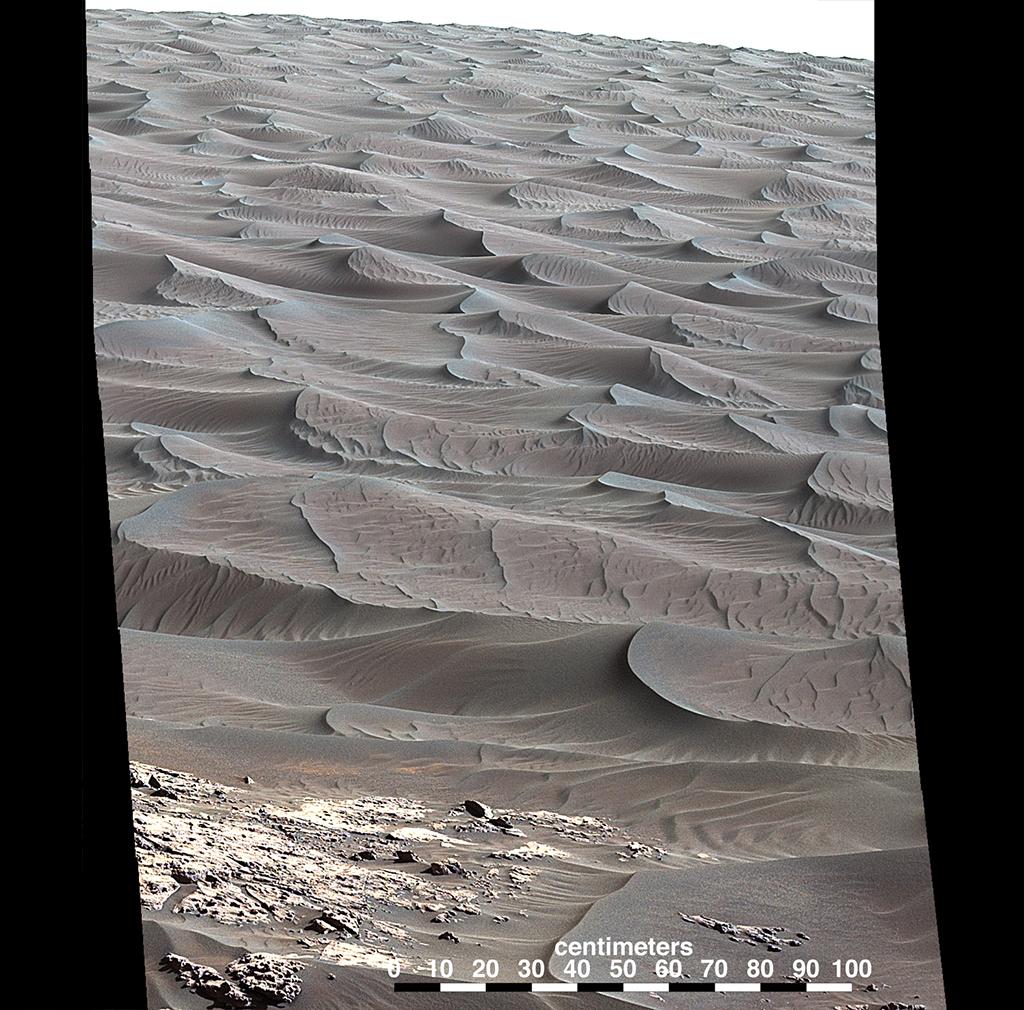
Walking Dunes
The mast-mounted camera on the nuclear-powered Curiosity Mars rover collected this image of sand dunes on the northwestern slope of the peak at the middle of the planet’s equatorial Gale Crater. Named the “Bagnold Dunes,” observations from orbit indicate the edges of the features move as much as 3 ft. each Earth year, driven by the wind. Curiosity is set to retrieve some of the material for analysis with its robotic laboratory as it moves higher up Mount Sharp.
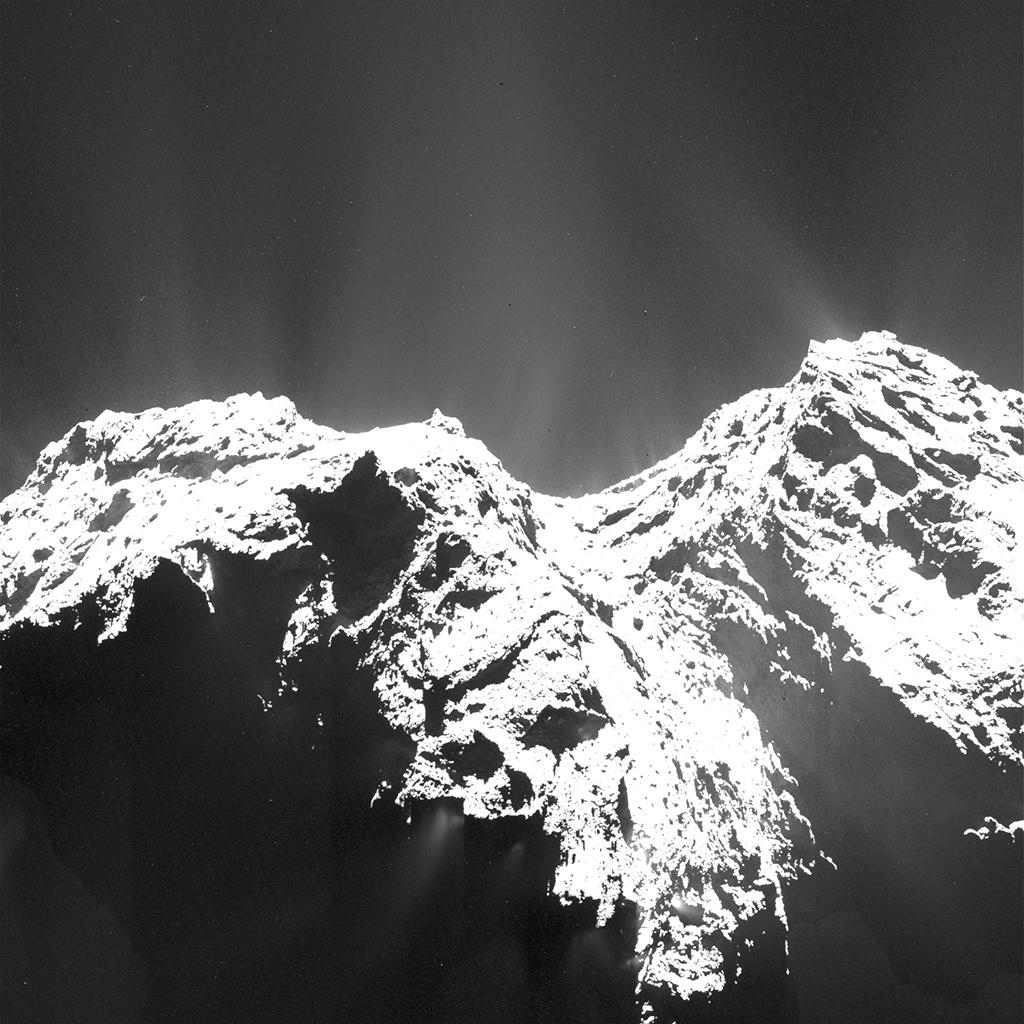
Comet
Europe’s Rosetta probe has spent more than a year at the comet 67P/Churyumov–Gerasimenko and has recently moved back in for more close-ups after perihelion and a “far excursion” away from the active object. Material erupting into the coma before being stripped away by the solar wind to form a tail is visible in this image of the comet nucleus, collected Dec. 12 at a range of about 62 mi. when the comet was about 1.9 astronomical units (AU) from the Sun and 1.7 AU from Earth. Resolution with the probe’s Narrow Angle Camera was 1.89 meters perpixel.
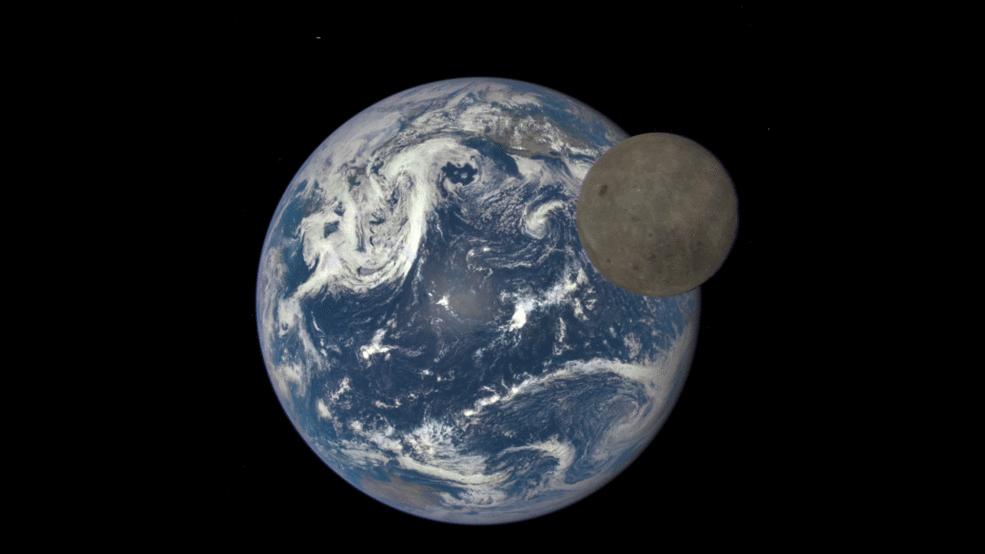
Political Football
Deep Space Climate Observatory (Dscovr), an Earth-staring spacecraft once derided as “Goresat” because of its origins as the brainchild of former U.S. Vice President Al Gore, returned imagery in August of the Moon passing in front of Earth from the Sun-Earth L-1 Lagrangian point. Operated by the National Oceanic and Atmospheric Administration, the imagery reveals the so-called “dark side” of the Moon that faces away from Earth, illuminated, as is the planet, across its full disk by the Sun behind the spacecraft.
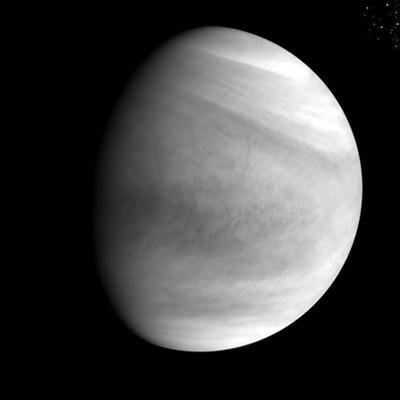
Venus
Japan’s Akatsuki Venus Climate Orbiter returned this ultraviolet image of Venus on Dec. 7 after achieving orbit around the planet following a 5.5-year trip from the launch facility on Tanegashima Island. A suite of six instruments on the spacecraft, also known as Planet C, will allow scientists to study the hot atmosphere and the surface hidden below the atmosphere’s thick clouds.
In 2015, robotic spacecraft gave planetary scientists different perspectives on objects across the Solar System, ranging from microscopic dust particles at its outer reaches to the gas giant Jupiter to the hot clouds of Venus.